This is a sponsored post written by me on behalf of Gilmour. All opinions are 100% mine.
Growing season is upon us, and if you haven’t planted your garden yet this year, it’s not too late (but you had better hurry and get started ASAP!)! Awhile back I shared a list of our favorite plants for gardening with kids, and today I’m sharing a few tips and tricks to help you prepare your garden for the growing season.
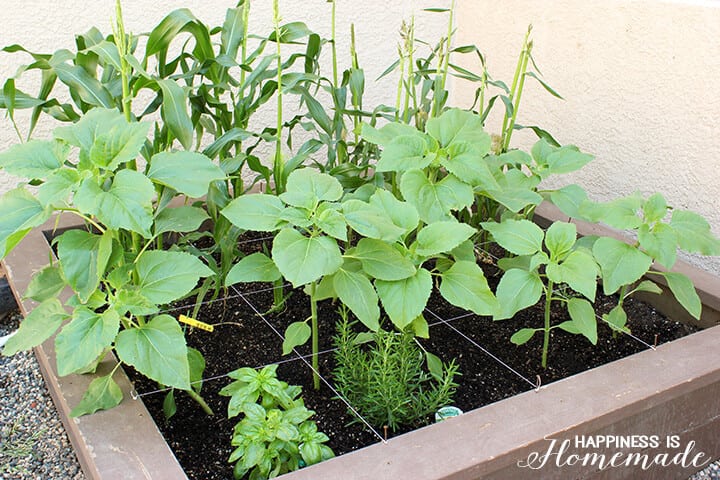 If you have loose well-draining soil, planting your garden directly in the ground is a great option, and it makes for a quick and easy set up. After turning the soil, simply cover the garden area in a layer of wet newspaper (to act as a weed barrier), top with a layer of soil, and start planting! For those of us with less than ideal soil, raised garden beds are the perfect solution. Many home improvement stores offer pre-built garden beds or DIY kits, and it’s quite simple to build your own. A raised bed can be lined with weed barrier cloth and filled with rich soil, so it’s always the perfect conditions for growing. We use a mixture of compost and vermiculite in our raised beds, and we practice the square foot method of gardening. Some of the main benefits of square foot gardening are that you can start a garden anywhere and grow a large amount of food in a small amount of space.
If you have loose well-draining soil, planting your garden directly in the ground is a great option, and it makes for a quick and easy set up. After turning the soil, simply cover the garden area in a layer of wet newspaper (to act as a weed barrier), top with a layer of soil, and start planting! For those of us with less than ideal soil, raised garden beds are the perfect solution. Many home improvement stores offer pre-built garden beds or DIY kits, and it’s quite simple to build your own. A raised bed can be lined with weed barrier cloth and filled with rich soil, so it’s always the perfect conditions for growing. We use a mixture of compost and vermiculite in our raised beds, and we practice the square foot method of gardening. Some of the main benefits of square foot gardening are that you can start a garden anywhere and grow a large amount of food in a small amount of space.
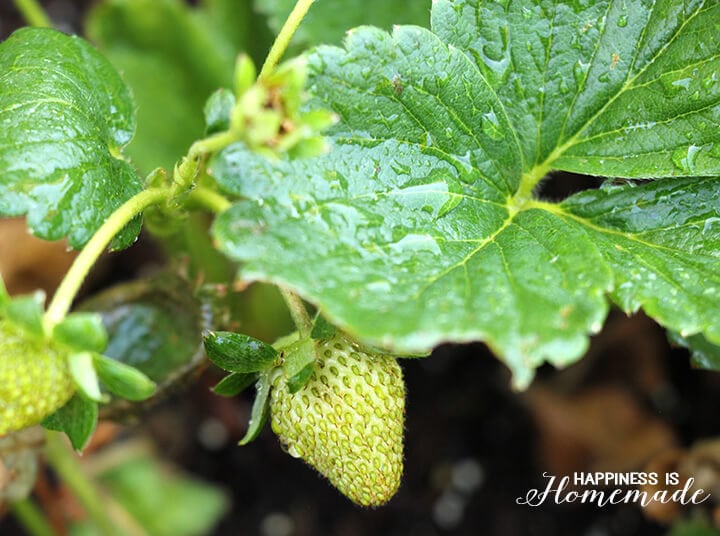 Whether your garden is in raised beds or sown in the ground, make sure to rotate your crops on a regular basis (at least every 2-3 years). After several years of growing a crop in the same place, the soil starts to lose nutrients and becomes less fertile (which means less fruits and vegetables produced!). Changing the location of the crops every couple of years helps to ensure healthy plants and an abundant harvest.
Whether your garden is in raised beds or sown in the ground, make sure to rotate your crops on a regular basis (at least every 2-3 years). After several years of growing a crop in the same place, the soil starts to lose nutrients and becomes less fertile (which means less fruits and vegetables produced!). Changing the location of the crops every couple of years helps to ensure healthy plants and an abundant harvest.
 Tomatoes and peppers are prone to magnesium deficiency, but adding Epsom salt (magnesium sulfate) encourages the plants to thrive. The additional magnesium allows the plant to absorb necessary phosphorus and nitrogen to increase flower blooming and yield. Epsom salt can also help plants grow bushier – just check out the 2-month-old tomato plant above (that’s a 3 foot by 5 foot bed that it’s filling up there!)! Pretty incredible, right? Add 1 tablespoon of Epsom salt to the soil when planting seedlings or dissolve 1 tablespoon into one gallon of water, and use to water young plants. Continue to water in Epsom salt once every 2-3 weeks to help promote strong growth and healthy plants.
Tomatoes and peppers are prone to magnesium deficiency, but adding Epsom salt (magnesium sulfate) encourages the plants to thrive. The additional magnesium allows the plant to absorb necessary phosphorus and nitrogen to increase flower blooming and yield. Epsom salt can also help plants grow bushier – just check out the 2-month-old tomato plant above (that’s a 3 foot by 5 foot bed that it’s filling up there!)! Pretty incredible, right? Add 1 tablespoon of Epsom salt to the soil when planting seedlings or dissolve 1 tablespoon into one gallon of water, and use to water young plants. Continue to water in Epsom salt once every 2-3 weeks to help promote strong growth and healthy plants.
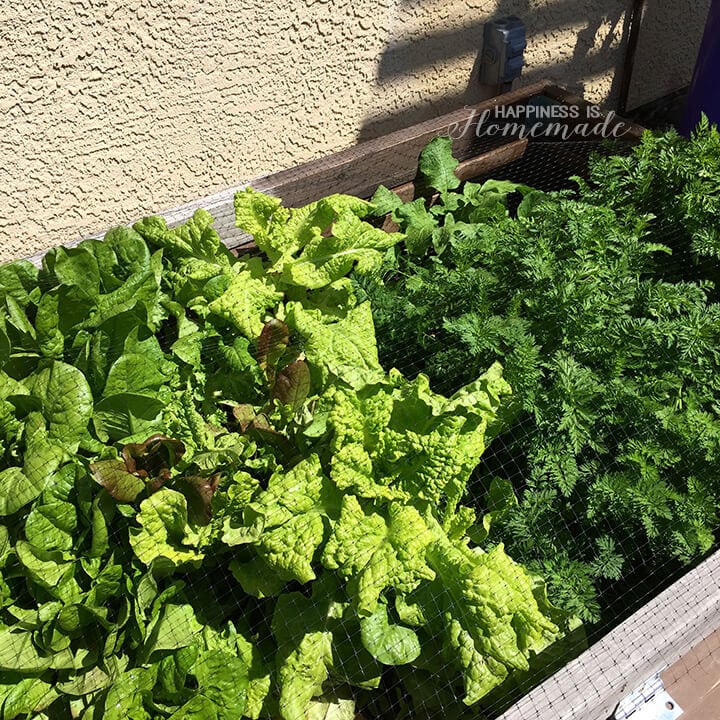 Garden pests are plentiful, but there are a few easy ways that you can help keep the most common pests at bay:
Garden pests are plentiful, but there are a few easy ways that you can help keep the most common pests at bay:
- Use fences to deter deer, rabbits and other animals. Bury the fence several inches into the ground so that they are unable to dig underneath it.
- Mesh netting helps to keep birds out of the garden and away from fruit trees. It also works great for keeping neighborhood pets or curious toddlers out of the garden beds, especially when seedlings are young and fragile. I built a basic frame out of 2x4s and stapled the mesh net to the top of it. The lightweight frame sits as a cover on top of our raised bed, and I can open and close it as needed (hinges optional!).
- Ladybugs are one of the best natural ways to keep aphids and small bugs out of the garden. They can be purchased at local nurseries or ordered online.
- Lightweight plastic row covers can also help to protect your crop against insects and mild cold spells.
- Copper is a great natural slug and snail repellent. Place copper strips or pipes around the perimeter of your garden bed (it works especially well with tomatoes), and the copper will create a chemical reaction that keeps the slugs and snails away!
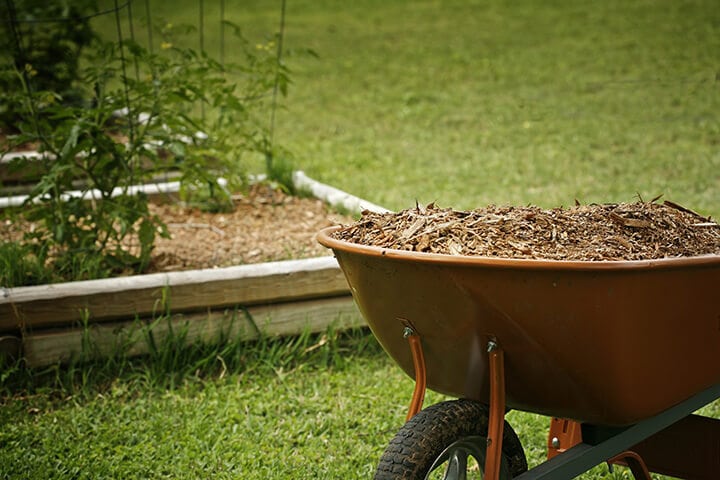 A layer of mulch (clean straw, compost, lightweight bark, redwood shavings, etc.) will help to keep your garden free of weeds that compete against your vegetables for water and nutrients. The mulch will also keep your soil and your plant’s roots moist for longer periods of time so that you won’t have to water the garden quite as frequently. Conserving water is always a great idea!
A layer of mulch (clean straw, compost, lightweight bark, redwood shavings, etc.) will help to keep your garden free of weeds that compete against your vegetables for water and nutrients. The mulch will also keep your soil and your plant’s roots moist for longer periods of time so that you won’t have to water the garden quite as frequently. Conserving water is always a great idea!
 Speaking of conserving water, a new mandate in the drought-ridden state of California (where I live) requires that all garden hoses must be used with a spray nozzle to cut down on the amount of water that is used and wasted. This Gilmour Ultimate Strength Stainless Steel sprayer is made specifically for watering, and when it’s paired with the premium duty Gilmour Flexogen (the only 8-layer hose on the market!), I know that I’m doing my part to water more efficiently and reduce leaks and waste. The Flexogen’s lightweight build and layer of oxygen-infused foam greatly increases its flexibility which results in a hose that can follow you around corners to different areas, and effortlessly coils for storage – all while maintaining Flexogen’s signature durability. Investing in quality garden tools like these will not only help you save water, it will also help you save money in the long run! You can find the Gilmour Flexogen hose (proudly made in the USA for over 40 years and backed with a lifetime warranty! You can’t beat that!) and accessories at your local home improvement or garden store.
Speaking of conserving water, a new mandate in the drought-ridden state of California (where I live) requires that all garden hoses must be used with a spray nozzle to cut down on the amount of water that is used and wasted. This Gilmour Ultimate Strength Stainless Steel sprayer is made specifically for watering, and when it’s paired with the premium duty Gilmour Flexogen (the only 8-layer hose on the market!), I know that I’m doing my part to water more efficiently and reduce leaks and waste. The Flexogen’s lightweight build and layer of oxygen-infused foam greatly increases its flexibility which results in a hose that can follow you around corners to different areas, and effortlessly coils for storage – all while maintaining Flexogen’s signature durability. Investing in quality garden tools like these will not only help you save water, it will also help you save money in the long run! You can find the Gilmour Flexogen hose (proudly made in the USA for over 40 years and backed with a lifetime warranty! You can’t beat that!) and accessories at your local home improvement or garden store.
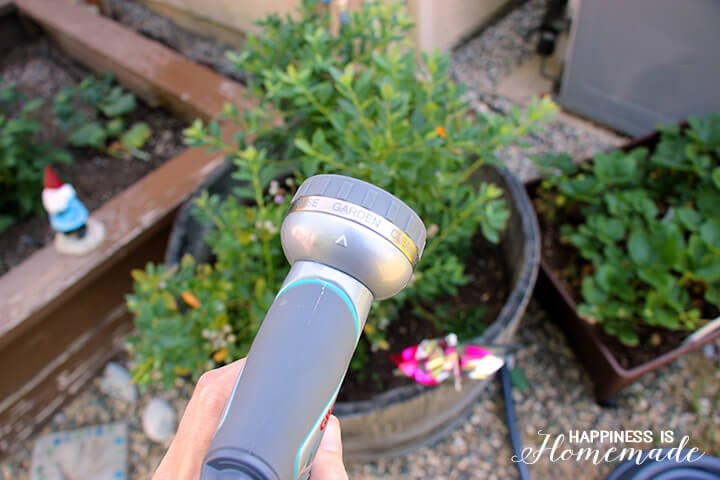 The spray nozzle has different settings for watering your garden, flowers and more. The clear labels take all of the guess work out of watering – easy peasy!
The spray nozzle has different settings for watering your garden, flowers and more. The clear labels take all of the guess work out of watering – easy peasy!
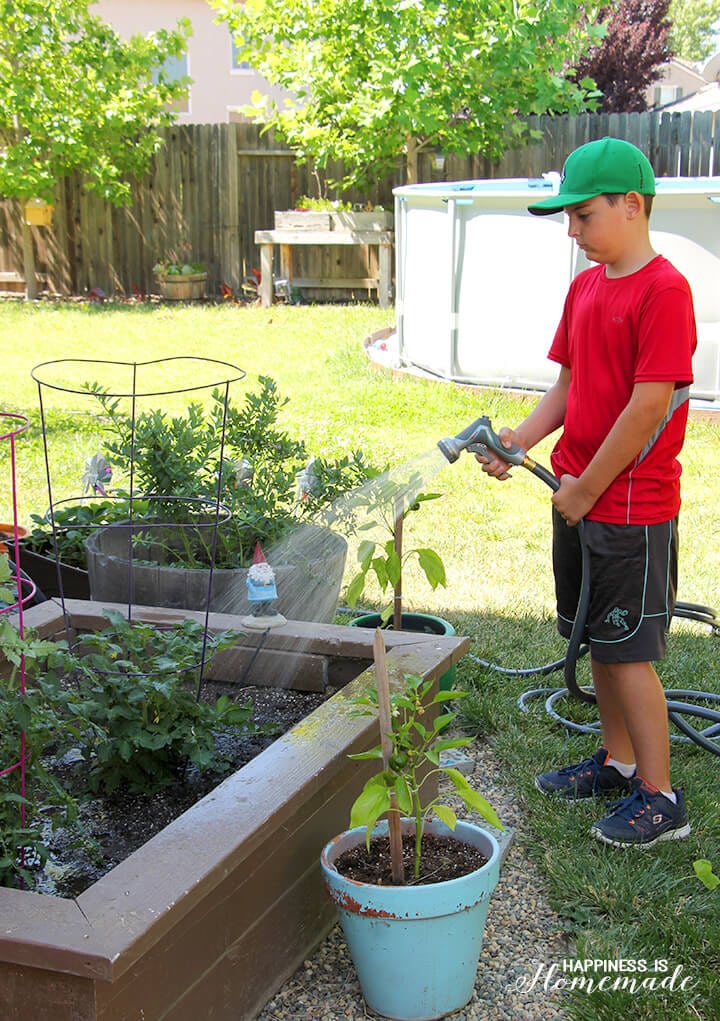 Most vegetables like a steady supply of moisture, but do not like to sit in standing water. About an inch of water per week is usually sufficient for in-ground gardens, though raised beds drain faster and may require more frequent watering. Check the moisture levels of the soil, and water only when the top inch of soil is dry.
Most vegetables like a steady supply of moisture, but do not like to sit in standing water. About an inch of water per week is usually sufficient for in-ground gardens, though raised beds drain faster and may require more frequent watering. Check the moisture levels of the soil, and water only when the top inch of soil is dry.
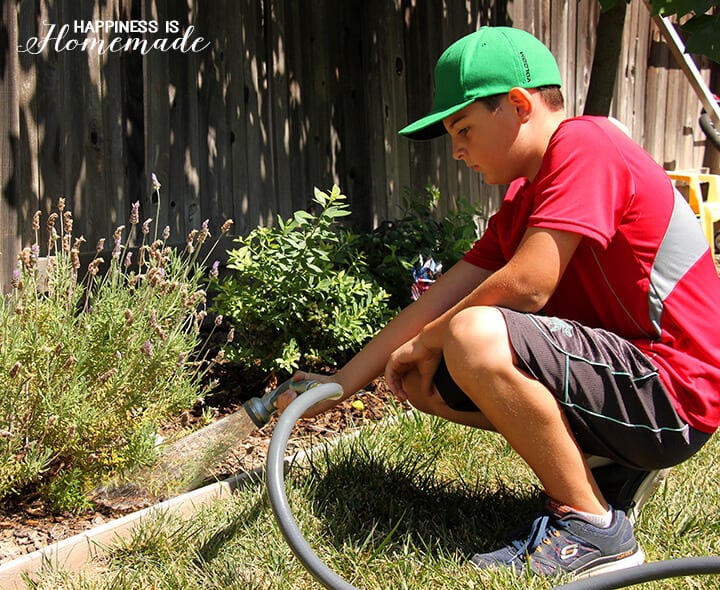 To reduce fungal diseases, water the soil, not the leaves of plants. With some basic preparation and upkeep, your garden will be flourishing in no time! There’s nothing like homegrown fresh fruit and vegetables straight from your own garden!
To reduce fungal diseases, water the soil, not the leaves of plants. With some basic preparation and upkeep, your garden will be flourishing in no time! There’s nothing like homegrown fresh fruit and vegetables straight from your own garden!
For more information about Gilmour’s USA-made line of quality and durable garden hoses and supplies, be sure to follow Gilmour on Facebook!

Heidi Kundin has captivated the hearts of millions with her colorful and inspiring approach to crafting, celebrations, and family fun. With over 15 years of experience, Happiness is Homemade has become a must-visit destination for those seeking quick and easy creative ideas and last-minute solutions. Heidi’s warm personality shines through her posts, inviting readers to join her on a creative journey that’s fun, rewarding, and achievable. Heidi is also the author of Homemade Bath Bombs & More and DIY Tie-Dye.
